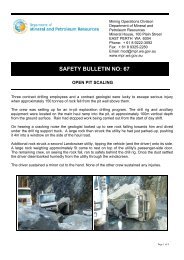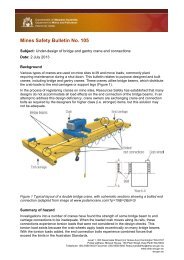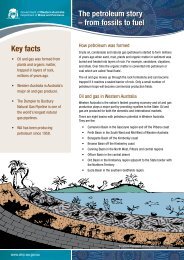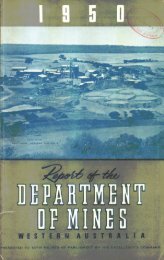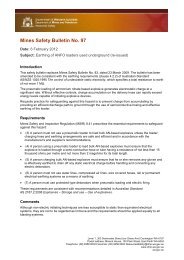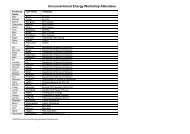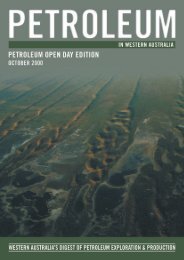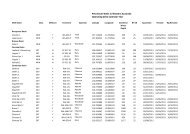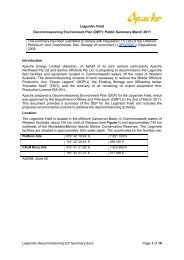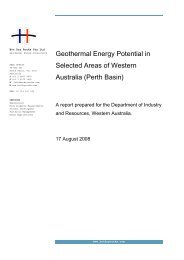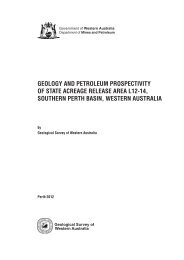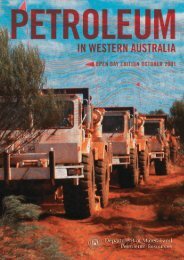Phase III - Department of Mines and Petroleum
Phase III - Department of Mines and Petroleum
Phase III - Department of Mines and Petroleum
You also want an ePaper? Increase the reach of your titles
YUMPU automatically turns print PDFs into web optimized ePapers that Google loves.
ecosystems. The GJV Ecological Monitoring Plan’s activities <strong>and</strong> methods should be incorporated into<br />
monitoring activities for the CO 2 disposal project. As a minimum, it is strongly recommended that an<br />
assessment <strong>of</strong> the possible impacts <strong>and</strong> recovery rates from CO 2 exposure for key receptors be undertaken<br />
in future technical work.<br />
The overall Monitoring <strong>and</strong> Surveillance Plan as proposed by the GJV is generally very thorough with clear<br />
well-defined objectives. Time-lapse seismic is identified as the key monitoring tool <strong>and</strong> hence it is strongly<br />
recommended that the results from the seismic pilot test (including their integration into the 3D baseline<br />
survey planning process) are reviewed as part <strong>of</strong> any <strong>Phase</strong> IV due diligence. We further recommend that<br />
overall spatial repeatability should be tested by an early repeat 3D survey (~2 years after start <strong>of</strong> injection).<br />
For the proposed soil gas survey, the GJV should carefully assess the required density <strong>of</strong> sampling points,<br />
with additional sites around wells, <strong>and</strong> potentially incorporating long term flux <strong>and</strong> concentration data. It is<br />
expected that results from the soil gas pilot study <strong>and</strong> plans for the baseline soil gas monitoring survey will<br />
be reviewed as part <strong>of</strong> any <strong>Phase</strong> IV due diligence.<br />
Since observation wells could provide the most valuable data points with respect to plume migration<br />
verification, it will be important to confirm the saturation measurements obtained from well logging<br />
programs. It is recommended that the GJV review their decision to not acquire fluid samples during<br />
saturation logging in observation wells. It is considered important that the GJV continues to review<br />
advances in technology on the most appropriate tool to measure changes in reservoir saturation <strong>and</strong> we<br />
strongly recommend that the GJV update current log modelling activities in support <strong>of</strong> the decision on<br />
which logging technology is to be used for saturation measurements. Signposts should be refined to reflect<br />
the importance <strong>of</strong> injection well pressure measurements, the process by which pressure data are used to<br />
constrain simulation models should be clarified, <strong>and</strong> the workflow for calibration (<strong>and</strong> up-scaling) <strong>of</strong><br />
saturation logging results for simulation modelling should be described. Even though the preliminary<br />
locations <strong>of</strong> the observation wells have been chosen, it is recommended that provision be included for<br />
changes to locations <strong>of</strong> the observation wells <strong>and</strong> timing <strong>of</strong> monitor surveys as new information becomes<br />
available on the rate <strong>and</strong> direction <strong>of</strong> the migrating plume.<br />
The Due Diligence Team believes that these recommendations can be accommodated in the GJV <strong>Phase</strong> IV<br />
technical work programme.<br />
xxxix



